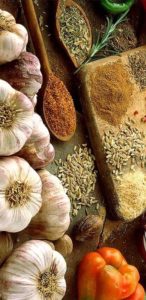Without a doubt there are natural remedies for almost all ailments or illnesses However there are a great many myths about miracle cures for acne, back pain, arthritis and so on Often you will be better saving your money and using natural methods for your aliments, aches and pains.
From our list of herbs and spices, the following are recommended for Headache:
Scroll down for links.
- Barberry Root
- Bay Leaf
- Brazilian Guarana
- Butterbur
- Catnip
- Cayenne
- Chamomile
- Dong Quai
- Evening Primrose
- Feverfew
- Ginger Root
- Green Tea
- Griffonia Seed
- Hawthorne Leaf
- Honeysuckle
- Kola Nut
- L-Arginine
- Lemon Balm
- Passion Flower
- Peppermint Leaf
- Valerian Root
- White Willow Bark
- Wintergreen
- Wood Betony
Natural Cures and Remedies for Headache
Recently Viewed
Natural Remedies Athletes Foot
Home Remedies Asthma
Home Remedies Gastritis
Natural Remedies Cholesterol
Hair Loss Remedies
Home Remedies Lower Back Pain
Home Remedies Eczema
Home Remedies Sciatica
Home Remedies Shingles
Home Remedies Herpes
Home Remedies Anal Fissures
Home Remedies Hives
Headaches may occur if there is an infection, such as a cold, virus and fever . Here, it is the infection that should be tackled. Vitamin C therapy is the best all round method. For a cold, high doses of vitamin C should be taken at hourly intervals with the appearance of the first symptoms like a sore throat, runny nose, etc. Vitamin C has worked miracles, and is considered a natural antibiotic.

Poisons and toxins admitted into the body through food, beverages and water, as well as through breathing, polluted air, can cause any number of disturbances. A headache may be the first warning that a poison has entered the body. Additives in foods and in many cases, cosmetics, skin and hair products are also serious offenders in bringing on headaches. IN
Barberry Root, Bay Leaf, Brazilian Guarana, Butterbur, Catnip, Cayenne, Chamomile, Dong Quai, Evening Primrose, Feverfew, Ginger Root, Green Tea, Griffonia Seed, Hawthorne Leaf, Honeysuckle, Kola Nut, L-Arginine, Lemon Balm, Passion Flower, Peppermint Leaf, Valerian Root, White Willow Bark, Wintergreen, Wood Betony
The difference between an ordinary cold and flu is a question of severity of symptoms. Flu is caused by specific influenza viruses, strains of which can be quite virulent. People with flu usually experience high fever, severe coughing, muscle ache, headache and nausea. They often feel very weak, virtually unable to drag themselves out of bed. Flu usually lasts longer than a cold, and can leave you exhausted and depressed for weeks afterwards. Flu can be a serious disease and requires vigorous treatment.
Here I see the oft-repeated anomaly, a low dose may have the opposite effect (tachycardic) of high doses (bradycardic). Sparteine is more quinidine-like than digitalic, a powerful oxytocic once used to stimulate uterine constrictions (CAN). Sparteine sulphate can produce respiratory arrest (CAN). Sparteine is a negative chronotropic and a negative inotropic. Doses corresponding to >300 mg sparteine (ca. 30 g herb). May induce dizziness, headache, ocular palsy, palpitations, prickly sensations in the extremities, profuse sweating, sleepiness, and weakness of the legs.
Contraindications, Interactions, and Side Effects (Kava) – Class 2b, 2c, 2d. Contraindicated for endogenous depression (AHP). Maximum tolerated doses for dogs was 60 mg/kg, for rats 320 mg/kg StX (70% kavapyrones). Perversely, if the authors didn’t misspeak, the dogs tolerated 24 mg/kg/day. Of >4000 patients taking 105 mg/day StX (70% kavapyrones), 1.5% had objectionable side effects (allergy, dizziness, GI distress, and headache). At levels 100 times the therapeutic dose (roughly 13 liters kava beverage a day or 300-400 mg rhizome per week) caused anorexia, ataxia, dyspnea, hair loss, red eyes, skin rash, visual problems, and yellow skin. “There is no potential for physical or psychological dependency. Use should not exceed 3 months.” (AHP) Germans limit use to 1-3 months (AHP). Commission E reports contraindications: esophageal and gastrointestinal stenoses; adverse effects: allergic reactions (rarely). Other sources report intestinal obstruction (AEH). Many reports suggest a yellowing of the skin in chronic users. “Chronic ingestion may lead to kawism’ characterized by dry, flaking, discolored skin, and reddened eyes” ( LRNP, May 1987). Persistent rumors suggest that overdoses can cause intoxication. Commission E warns against the concomitant use of kava with barbituates, antidepressant medications, and CNS agents. Lactating or pregnant women should not use kava (WAM). “Not permitted as a non-medicinal ingredient in oral use products in Canada” (Michols, 1995). Abuse by Australian Aborigines suggest links to hematuria, infectious disease, neurological abnormalities, pulmonary hypotension, nephrosis, visual disturbances, ischemic heart disease, thrombosis, and sudden heart attacks (MAB). The following quote might scare abusers, as it should, “Full consciousness is maintained with even fatal doses” (APA, quoting Weiss, 1988).
Barberry Root
Bay Leaf
Brazilian Guarana
Butterbur
Catnip
Cayenne
Chamomile
Dong Quai
Evening Primrose
Feverfew
Ginger Root
Green Tea
Griffonia Seed
Hawthorne Leaf
Honeysuckle
Kola Nut
L-Arginine
Lemon Balm
Passion Flower
Peppermint Leaf
Valerian Root
White Willow Bark
Wintergreen
Wood Betony
Contraindications, Interactions, and Side Effects (Tomato) – Not covered (AHP; KOM). None reported at normal doses (PH2). Leaves are poisonous and green tomatoes may not be salubrious; toxicity not noted with less than 100 g. Symptoms include arrhythmia, bradycardia, colic, cramps, diarrhea, dizziness, dyspnea, headache, mucososis, vomiting, and in huge overdoses, respiratory collapse (PH2).
